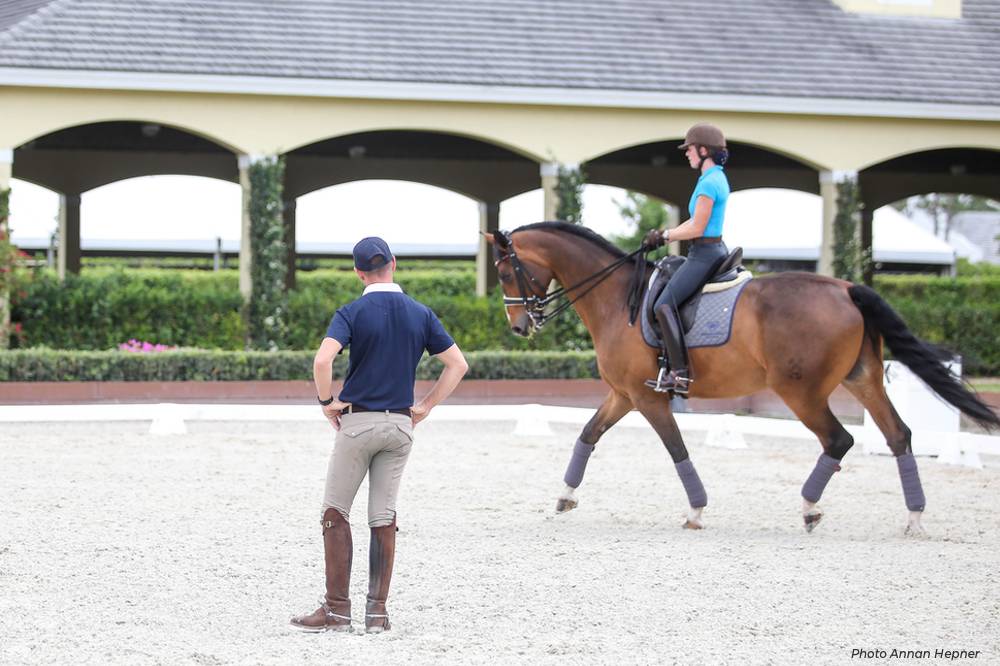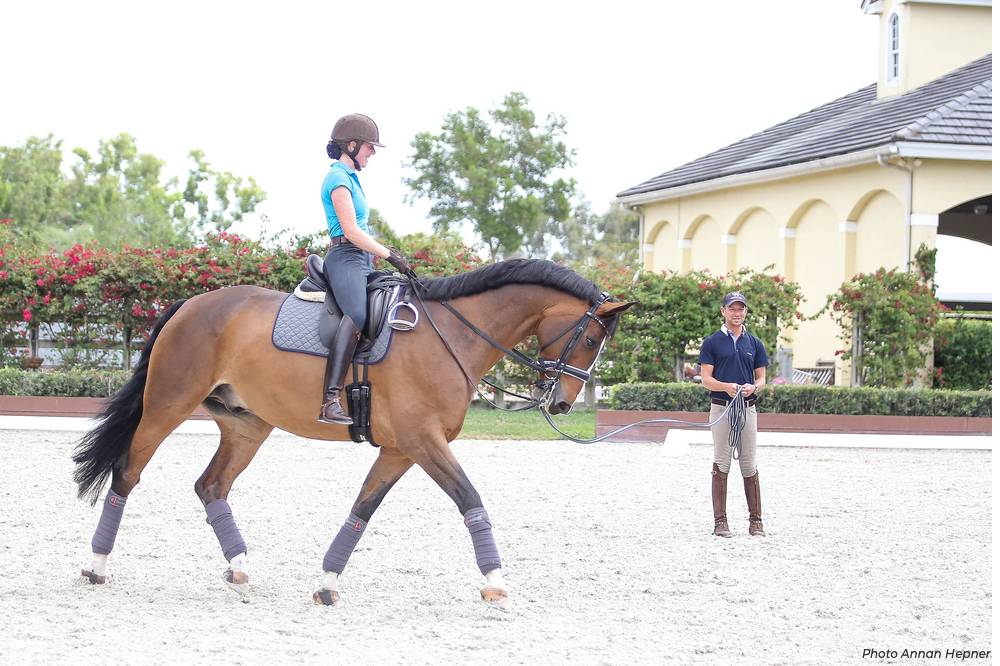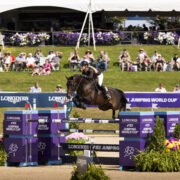Sit the Trot Like An Olympian

For many dressage riders, especially those who are just beginning, the sitting trot can be a daunting task. To effortlessly sit in the tack like an Olympian takes years of dedication.
What Makes a Great Sitting Trot?
Both horse and rider play a role. If the horse is swinging over his back then the trot is easier to sit. And, of course, the dynamics of horse’s trot will play a role as well. Is the horse’s trot large and ground covering? Or is it small and choppy? While all these aspects are factors. The rider is the other half of the puzzle.
The rider, their fitness, flexibility, and skill level help or hurt the sitting trot. Does the rider follow the natural motion of the horse, or are they locked in their seat preventing them from absorbing the horse’s motion in a supple way? We often hear of suppleness in the horse, but it also applies to the rider.
So, How Do We Improve Sitting the Trot?
Olympian David Marcus has had plenty of experiences working horses and riders through the levels, and miles of insight into why the sitting trot is difficult for many. “One of the most common difficulties I find with riders is their desire to use their knees to grip in sitting trot,” said David, 37, who represented Canada at both the 2012 Olympic Games in London and the 2014 Alltech FEI World Equestrian Games in Normandy, France. “This causes two things typically – either an inability to have a following seat, meaning the gripping knee has pushed your seat out of the saddle into a perched position, asymmetries in the riders position, or both.”
Read this next: Why It’s Best To Train Your Own Horse
“In general, people grip with their knees because they are not balanced equally on both seat bones,” David elaborated. “I liken it to sitting on a fence rail with one leg hanging on either side. One can easily do this if they’re sitting exactly in the middle, though if sitting off center with nothing to grip onto with their knees they’ll fall off the fence. Add a moving horse under you, and hence the desire to grip with the knees when riding.”
Every rider has struggles with their position. David was not ashamed to admit that he does too. “We all have to regularly work on our position in order to be the most effective rider possible. Personally, I battle with a weaker right leg that likes to turn out. I’m well aware of my weaknesses and work on them daily. Off of the horse, I do Pilates and am in physiotherapy to work on my core strength and symmetry. While riding I constantly am reminding myself to adjust my position.”
‘We all have to regularly work on our position in order to be the most effective rider possible.’
“My husband, Nicholas Fyffe, and I train together every day and our students also know my weaknesses so they can help point out when I fall off the wagon,” he continued. The couple’s business, Marcus Fyffe Dressage, is based at Still Point Farm in Wellington, Fla. “All riders need support from the ground to ensure we are correcting ourselves in the moment. Then we can improve ourselves daily while not picking up other bad habits.”
Lunge Lessons and No Stirrup Riding
“No Stirrup November” may seem like a fun trend, but David says that he often makes himself ride without stirrups. No one is ever too good to practice basic riding, and David encourages riders to do work without stirrups, both on and off the lunge line. If possible, he suggests lunge lessons to help improve the sitting trot. Not only will it make the rider aware of their body, but they can also gain confidence while not worrying about steering or turning the horse.
On the lunge line, it is best to work with an instructor, but a peer could help as well. Work on riding with no reins and focusing on your seat. A neck strap or a strap on the front of the saddle can be helpful to ensure you are not balancing on the horse’s mouth. If you struggle with sitting the trot and want to hold on to the reins as balance, then practice sitting using a strap instead. Then practice with no reins or a loose rein on the lunge.
Like this article? Try: Praise The Horse: Build Confidence With Positive Training
Other Exercises
Of course, properly working the horse over the back will make him easier to sit, but it can be beneficial to both horse and rider to do trot-canter transitions early on in the ride. The canter often loosens the horse’s back and the rider’s body, making it easier to practice the sitting trot.
‘All riders need support from the ground to ensure we are correcting ourselves in the moment. Then we can improve ourselves daily while not picking up other bad habits.’
Working on sitting the trot at the end of a ride will also aid a stiff rider’s ability to sit, as they are more warmed up and “with” the horse. If you find sitting for long periods to be difficult, practice sitting a few strides then posting a few strides. Alternating between the two will help build strength and keep your horse happy, as opposed to having to balance on his mouth when you get tired while sitting.



